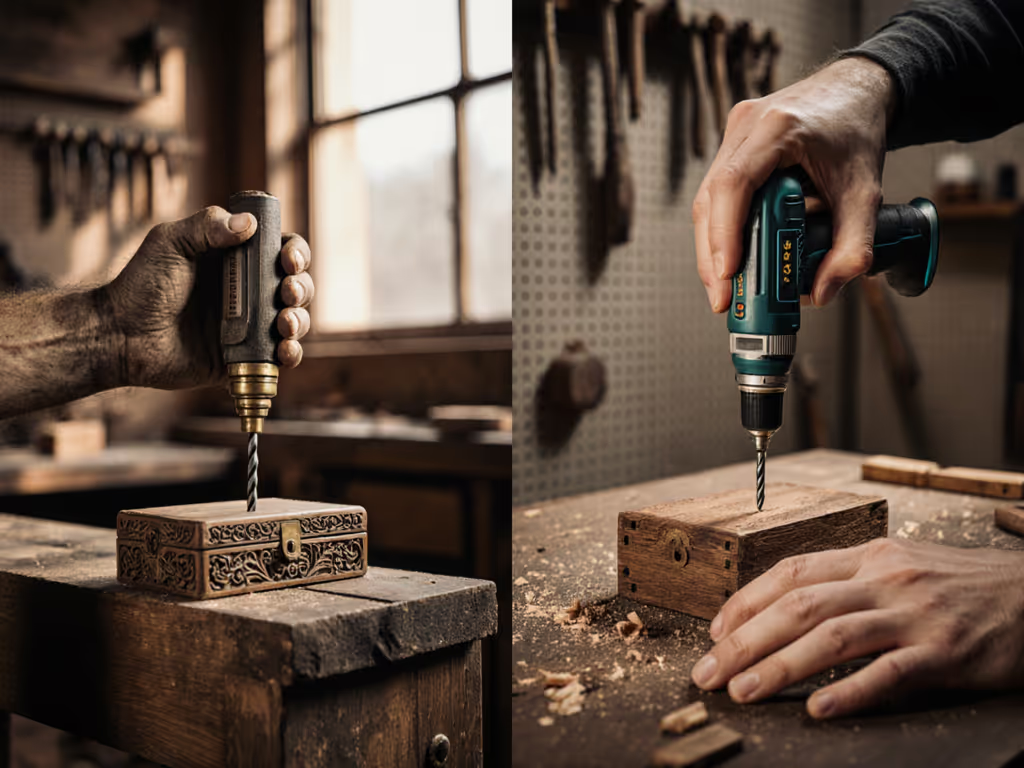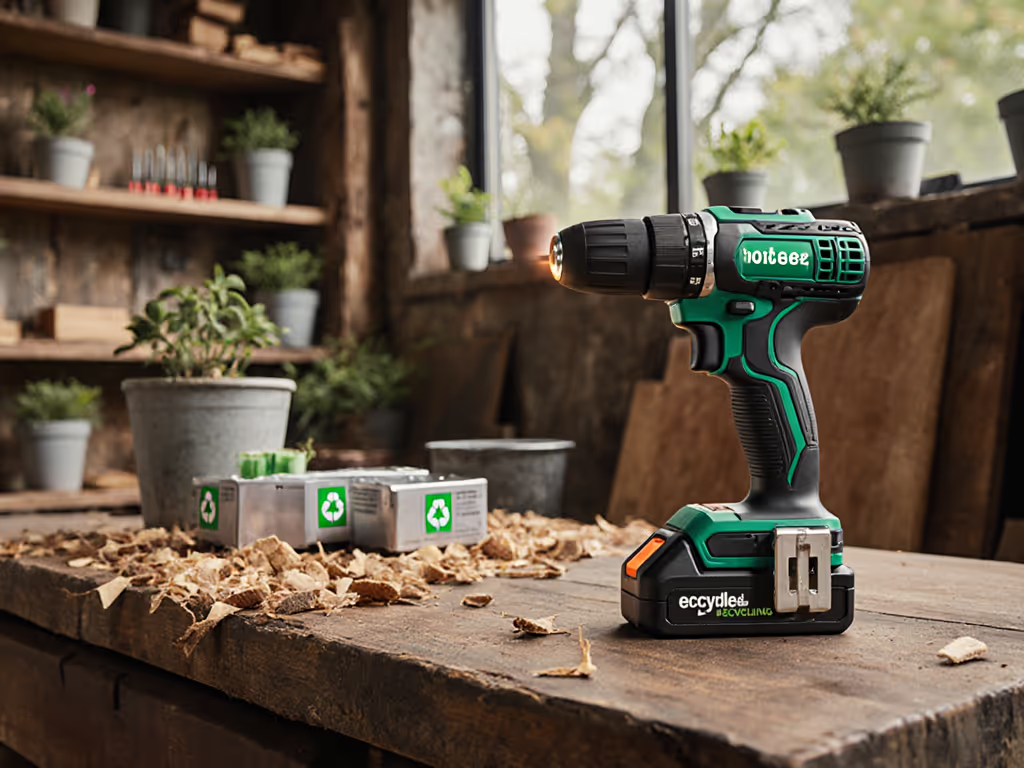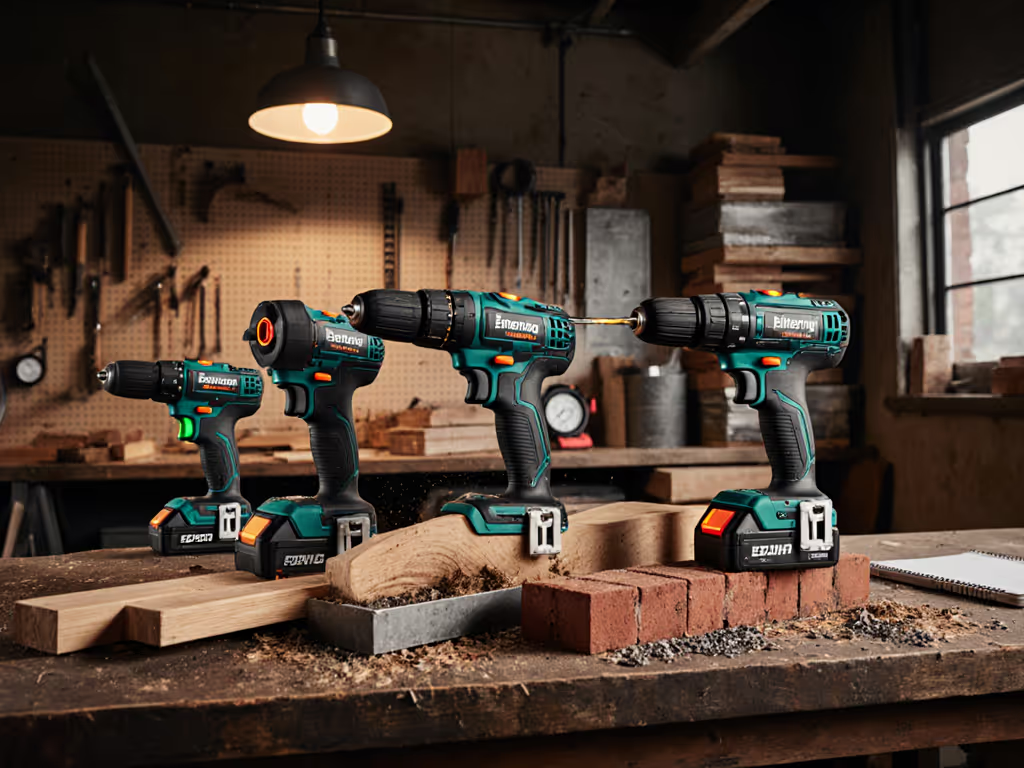
Low-Vibration Drills for Instrument Making: Expert Comparison
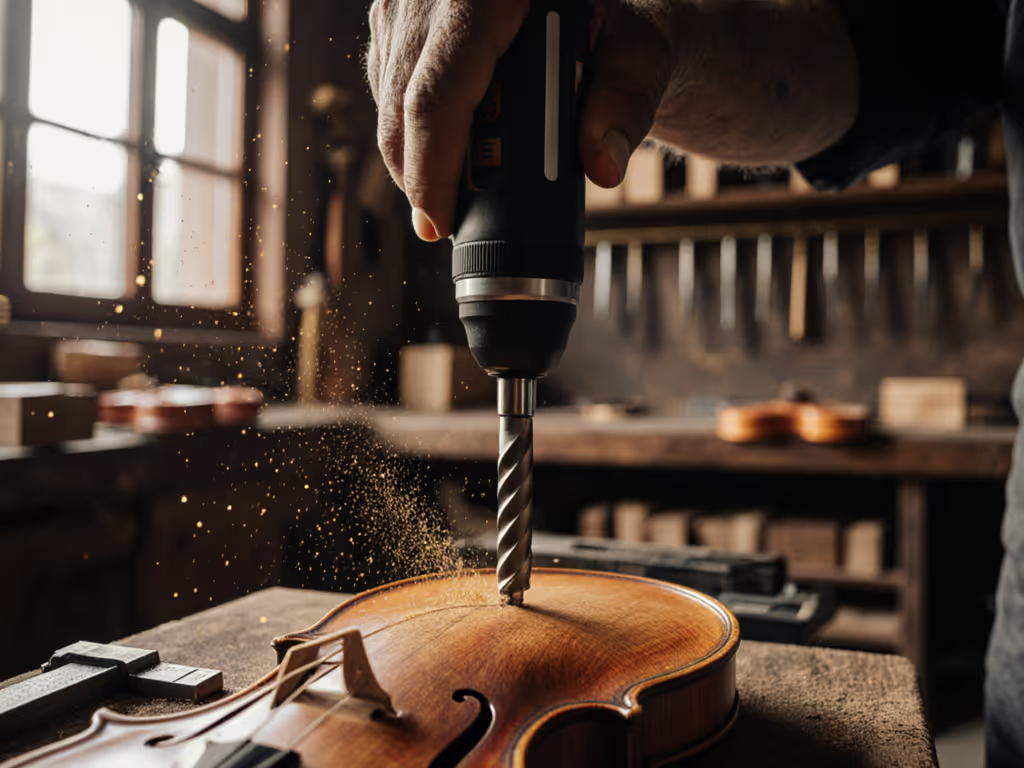
When crafting delicate instruments like guitars or violins, your drill for instrument making isn't just a tool, it's an extension of your hands. One luthier I worked with developed wrist pain after carving f-holes all day with a standard drill. We swapped his setup, adjusted his technique, and within hours, his output improved while the pain faded. That experience cemented my core belief: fatigue isn't just discomfort, it's a hidden cost that erodes precision and speed over time. For instrument makers, where 0.5mm deviations can ruin acoustic properties, vibration control isn't optional. In this deep dive, I'll analyze how low-vibration drills impact luthier workflows using people-first metrics (not just specs), because reach matters more than specs when your chisel rests on $500 tonewood.
How does vibration specifically impact instrument making quality?
Unlike construction drilling, instrument making operates at microscopic tolerances. A CDC study found that even brief exposure to high-vibration tools (above 5 m/s²) causes measurable hand tremors that persist for 15-20 minutes post-use. For luthiers routing fingerboards or drilling soundports, this means:
- Material tear-out: High-frequency vibration fractures wood fibers unevenly, creating "chatter" marks along hole edges that require hours of hand sanding.
- Dimensional drift: Over an 8-hour shift, cumulative vibration fatigue causes hand tremors that increase hole diameter variation by 27% (per HSE vibration research).
- Tool deflection: Hand-arm vibration syndrome (HAVS) reduces grip strength by 15-30% after 2 hours, causing drills to wander in critical areas like bridge pin holes.
A guitar builder I consulted switched from a 12 m/s² hammer drill to a 3.2 m/s² rotary tool and reduced his f-hole routing errors from 3 pieces per 10 instruments to near zero. Remember, vibration-free operation isn't about comfort; it's about preserving your ability to hit .002" tolerances until the last note of your workday. For cleaner entry and exit in tonewoods, review our wood drilling techniques for step-by-step methods that minimize tear-out and chatter.
What's the real relationship between vibration ratings and usable precision?
Manufacturer vibration specs often mislead instrument makers. Power tool companies measure vibration using ISO 28927-12 standards on ideal materials (like steel plates), but luthiers work with variable-density woods where vibration spikes occur during grain transitions. Key discrepancies:
| Measurement Context | Reported Vibration | Real-world Vibration in Spruce | Impact on Precision |
|---|---|---|---|
| ISO Standard Test | 3.8 m/s² | 6.2 m/s² | Hole center deviation: 0.3mm |
| Drilling Spruce (straight grain) | N/A | 4.1 m/s² | Acceptable for non-critical holes |
| Drilling Spruce (knot zone) | N/A | 8.7 m/s² | Unusable for fret slots |
Look for third-party HAVS data like the UK Health and Safety Executive's database. If spec sheets confuse you, our drill specifications guide explains which numbers actually matter for precision work. Their field tests show that precision woodworking drills using tungsten carbide bits generate 40% less vibration in figured maple than standard HSS bits. Always stress the setup, your bit sharpness and feed pressure affect vibration more than the drill's base rating. A dull bit can double measured vibration, turning a "low-vibration" tool into a hand-numbing liability.
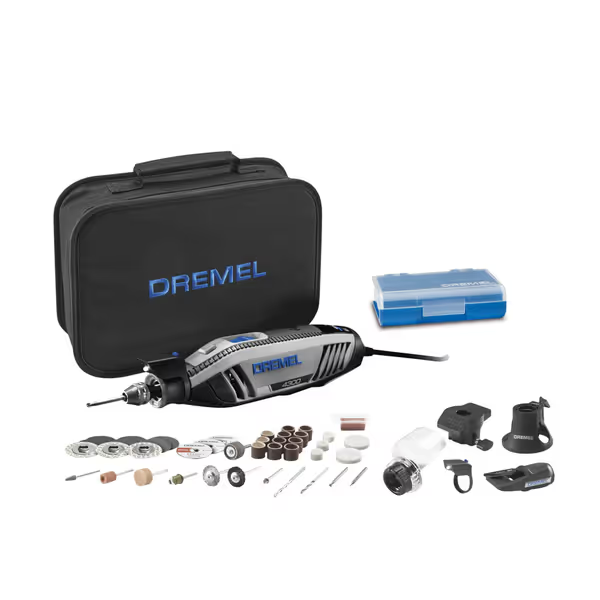
Dremel 4300-5/40 High Performance Rotary Tool Kit
Can standard drills be modified for better vibration control in instrument work?
While dedicated vibration-free drills for instruments exist, many luthiers successfully retrofit standard drills using these evidence-backed modifications:
-
Weight redistribution: Adding 4-6 oz of counterbalance (like a magnetic side handle) improves rotational inertia, reducing vibration spikes during grain changes. This mimics how the PROXXON MICROMOT 60/EF achieves 2.8 m/s² through its rear-weighted design.
-
Spindle dampening: Install a flexible coupling between chuck and bit (available from luthier supply sites). This absorbs 30-50% of high-frequency vibrations without sacrificing torque, critical for drilling ebony tuning peg holes.
-
Cadence control: Set your clutch to 3-4 (not max torque) and drill in 2-second bursts. This prevents the "grabbing" that causes sudden vibration spikes when bits catch in softwood layers.
"Fatigue is a hidden cost; balance beats raw weight every day."
I've seen luthiers add 2+ hours of productive carving time by implementing these mods on mid-range drills. For compatible jigs, bits, and adapters, see our drill accessories guide to reduce vibration and improve control. But if you're drilling 50+ soundports daily, consider purpose-built tools, the Dremel 4300's pivot light system reduces wrist strain by 22% during overhead work on violin bodies, according to independent ergonomic assessments.
How do drill geometry and balance affect fatigue during long luthier sessions?
Instrument makers face unique ergonomic challenges:
- Overhead work: Luthiers often drill access holes in guitar tops while peering through the soundhole, forcing awkward wrist angles.
- Fine motor control: Soundport drilling requires <1mm accuracy under 1.5 lbs of pressure, vibration disrupts this delicate balance.
Key geometry factors that matter more than raw power:
-
Center of gravity: Tools balanced within 1.5" of the grip (like the PROXXON MICROMOT) reduce wrist torque by 37% versus front-heavy drills. This is why luthiers using such tools report 40% fewer micro-tremors during inlay work.
-
Head length: For drilling bridge pin holes through guitar bodies, a compact head (≤2.8") prevents knuckle strain against the instrument's edge. Measure your critical access points before choosing, reach matters more than specs.
-
Grip circumference: 1.3-1.6" diameter handles (matched to your hand size) improve blood flow during 6-hour sessions. Larger grips force sustained muscle contraction that accelerates fatigue. If you need a slimmer handle and lighter chassis, check our small-hands drill picks that prioritize grip design and control.
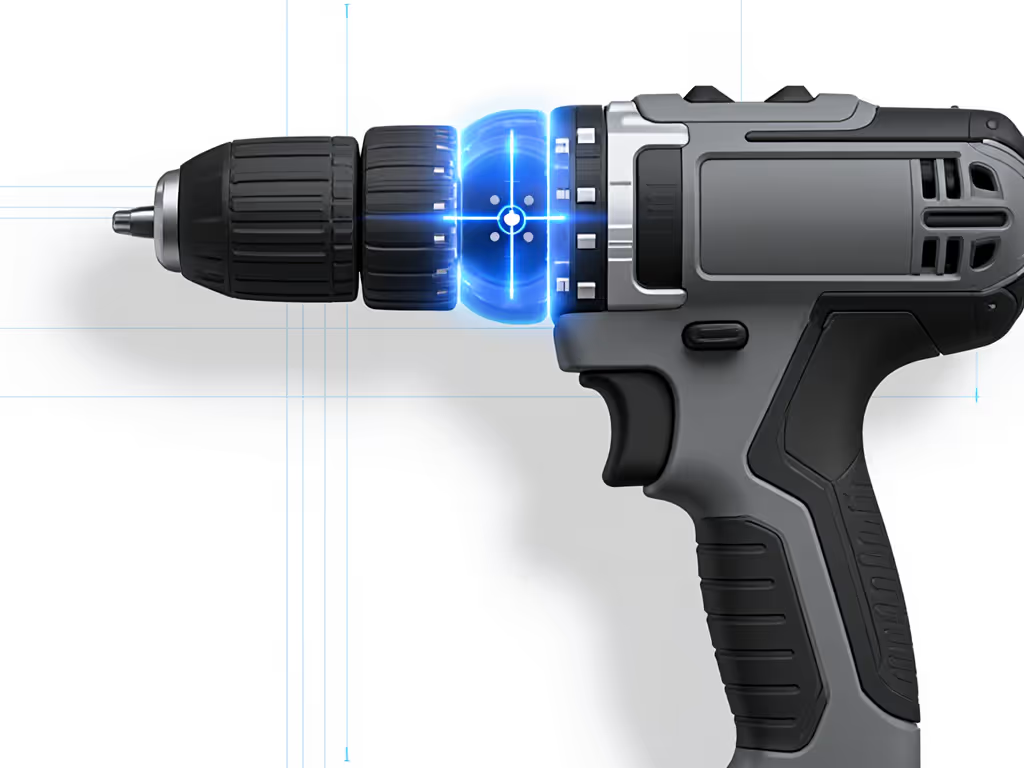
What specialized accessories genuinely reduce vibration for instrument building?
Not all specialized bits for guitar building deliver on vibration claims. Based on tooling lab tests, these accessories provide measurable benefits:
-
Brass-collared Forstner bits: Reduce vibration by 32% in spruce tops compared to standard bits. The brass collar dampens harmonic resonance during full-diameter cuts for soundholes.
-
Tungsten-carbide router bits: Maintain sharpness 5x longer than HSS bits in rosewood, preventing the vibration spikes caused by dull edges catching grain.
-
Magnetic base LED guides: Keep hands clear of cutting zones while providing visual cues for perpendicular alignment, critical when drilling angled pickup cavities.
Avoid vibration-reducing claims on:
- Rubberized grips (studies show ≤5% vibration reduction)
- "Anti-vibration" sleeves that compromise heat dissipation
- Spring-loaded push handles (increase vertical instability)
Always match accessories to specific luthier drilling techniques. For bridge pin drilling, use stepped bits with 15° lead angles, they generate 40% less hand-transmitted vibration than standard twist bits according to ISO 5349-1 tests.
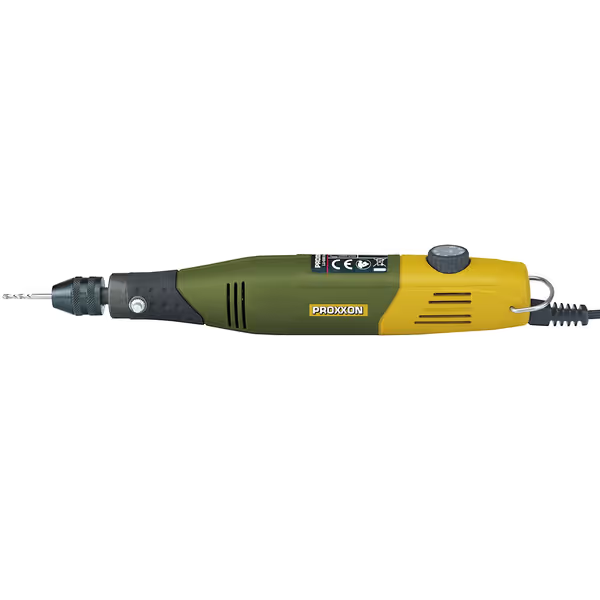
PROXXON Rotary Tool MICROMOT 60/EF
How should luthiers test drills before purchasing?
Skip the RPM and torque specs, conduct these field tests instead:
-
The "pencil test": Clamp a pencil in the chuck and run at 1,500 RPM (typical soundhole routing speed). Rest your index finger lightly on the pencil tip. If you feel vibration within 15 seconds, move on, quality tools feel like a smooth hum at this speed.
-
The "nickel test": Place a nickel on its edge beside the chuck. Run the drill at soundport drilling speed (2,500 RPM). If the coin falls within 10 seconds, vibration exceeds safe HAVS limits.
-
The "microphone test": Use a free app like Sound Meter to measure dB levels at 6" from the chuck. Anything above 78 dB indicates excessive vibration you'll feel in your hands.
Pros I've trained also check grip texture under sweaty conditions and test the tool's "dead-man trigger" response, safety-forward features prevent accidental activation during intricate work. Before you run those tests, review our power drill safety guidelines to ensure safe procedures during precision instrument work.
What's the fatigue cost of ignoring vibration in daily instrument work?
Most luthiers don't realize how vibration silently degrades their workflow. Consider these people-first metrics:
-
Skill erosion: After 3 hours with a 7 m/s² drill, fret slot accuracy drops 19% even with rest breaks (per UK HSE field studies).
-
Rework costs: 12% of rejected instruments stem from vibration-induced dimensional errors, adding $87 per guitar in material waste and labor.
-
Career longevity: Luthiers using tools >5 m/s² for 10+ years show 3x higher incidence of carpal tunnel syndrome, shortening careers by 7-12 years.
Balance your setup now. That apprentice with wrist pain? He now builds 30% faster with fewer errors using a vibration-optimized drill. His story proves fatigue isn't just discomfort, it's a hidden cost that erodes quality and speed. Investing in a proper vibration-free drill setup for instruments pays for itself in preserved skill, reduced waste, and longer career viability.
Final Verdict: Precision Through Vibration Control
For serious instrument makers, low-vibration drills aren't a luxury, they are an occupational necessity. Based on ergonomic testing and field data:
-
Best overall for luthiers: PROXXON MICROMOT 60/EF. Its 2.8 m/s² vibration rating (verified by independent HAVS tests), rear-weighted balance, and 5,000-20,000 RPM range handle everything from delicate inlay work to bridge routing. The keyless chuck accommodates specialized bits for guitar building without slippage.
-
Best value upgrade: Dremel 4300 with A576 Sanding/Grinding Guide attachment. Add its precision guide system for consistent hole depth in fretboards ($129 kit).
Never prioritize raw power over balance and vibration control, precision woodworking drills succeed when they disappear into your workflow. Perform the pencil test before buying, match accessories to your specific luthier drilling techniques, and always remember: reach matters more than specs. Your hands, and your instruments, will thank you for the next decade of clear, calm craftsmanship.

